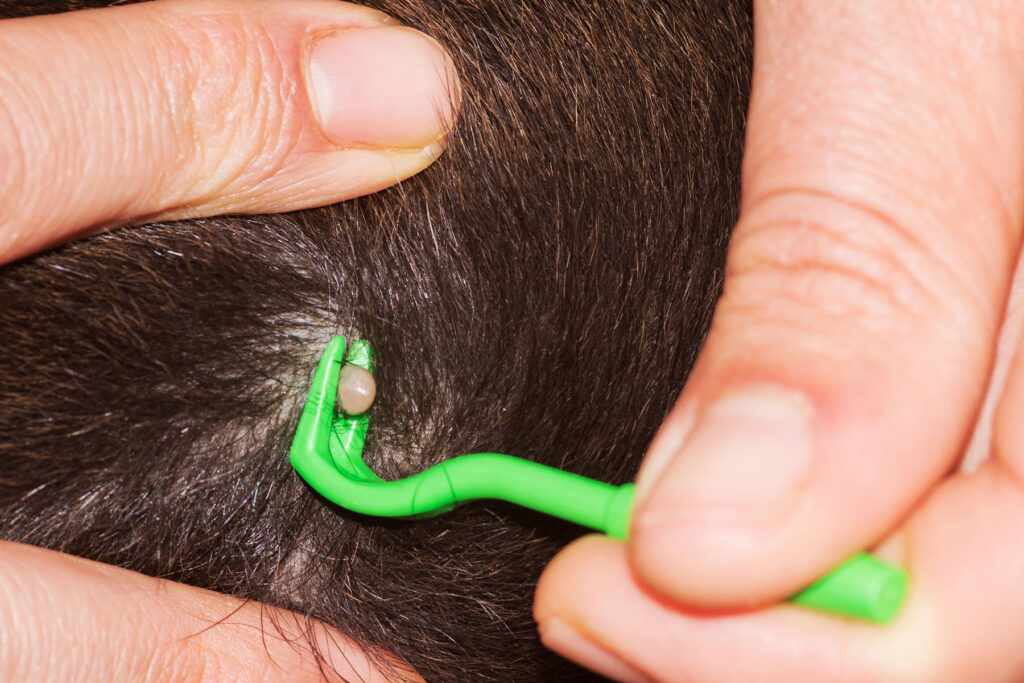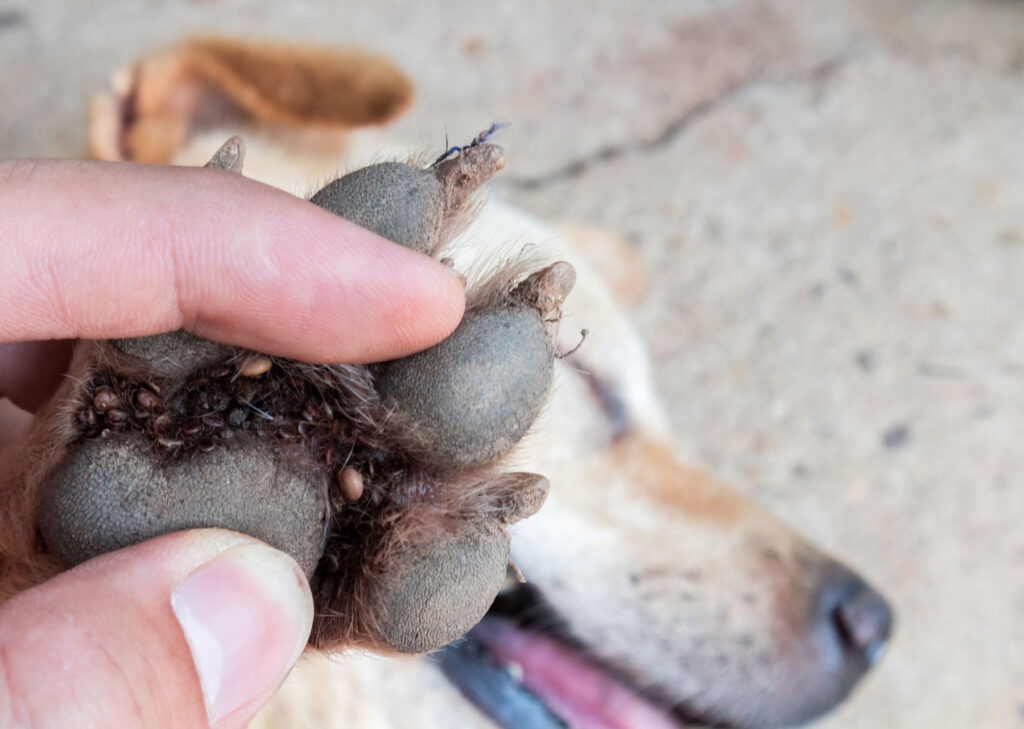Natural Pet Health
Ticks And Tricks – Our 5 Top Tips To Protect You And Your Dog From Ticks
Ticks are nasty little parasites which feed on humans and animals alike. Although tick exposure can occur year-round, they’re more common in warmer months, meaning our pets are at risk of picking these critters up between late spring and autumn and, as with most parasites, prevention is better than cure when it comes to tick control..
What Do Ticks Look Like?
Ticks are eight-legged parasites, which latch onto host – human or animal – to feed on its blood.
Ticks can be surprisingly hard to spot until they get quite big, so it’s important to check your pet regularly. Once found, it’s best to remove ticks as soon as possible after they latch on to reduce the risk they’ll pass on a disease.
Are Ticks Harmful To Pets?
While they do suck your pet’s blood and can be uncomfortable, what makes ticks dangerous is they can carry and transfer dangerous diseases such as Lyme disease, Haemobartonellosis, and Babesiosis.
Tick saliva can also be highly irritating, and this may cause your dog or cat to scratch excessively at the site of the tick bite. However, tick bites are only generally itchy after the tick falls off or if one is pulled out badly with a tweezers. Symptoms associated with extreme itching such as sore, broken skin, infection and hair loss may also occur in serious cases.
Removing A Tick From Your Pet
Using a pair of fine-point tweezers is the most common and effective way to remove a tick from your dog or cat. The fine-point ends are important to avoid tearing the tick and spreading possible infections into the bite area.
Spread your pet’s fur, then grasp the tick as close to the skin as possible. Very gently, pull straight upward in a slow, steady motion. This will help prevent the tick’s mouth from breaking off and remaining embedded in the skin. Another option is the use of a specially designed tick removal hook, which is even easier to master.
Remember never to try to remove ticks with your hands and don’t handle removed ticks.

How To Protect You And Your Dog From Ticks
The good news is you can prevent yourself and your dog picking up these parasites quite easily.
- Avoid areas with high grass
Ticks like to lie low, living close to the ground in long grass or leaf debris. Avoiding these areas (particularly in the warmer summer months) can help limit exposure to ticks. It’s also wise to walk in the centre of paths and avoid over-hanging vegetation at the edge of paths where ticks may be waiting.

2. Protect yourself during ‘walkies’
Make sure you wear suitable clothing while out walking – wearing shorts in tick habitat is an invitation to be bitten! Insect repellents can also be sprayed on clothing as a deterrent, but always follow the manufacturer’s guidelines.
3. Check yourself and your pet
If you’ve been out for a walk, it’s generally a good idea to examine both yourself and your pet carefully once home for any ticks that might have attached on the way.
4. Keep your grassy garden tidy
Long grass and organic debris are great places for fleas and ticks to hide. To your own garden safe for your dog, regularly mow the lawn and rake up any fallen leaves, so your garden is less parasite-friendly.
5. Choose the right treatment
There are many tick-control products available on the market to help keep pets tick free. The important thing is to do your research to find the best option for you and your pet and if in doubt, consult your veterinarian.
This article was vet approved by Tom Farrington MRCVS., MVB., VetMFHom. Chief Veterinary Medical Advisor for HomeoPet. Tom has been a practicing veterinarian in Ireland for over 35 years and employs complementary therapies in a multi discipline approach to healing medicine. Tom is an honors veterinarian, holds advanced degrees in homeopathic medicine, lectures internationally and leads clinical research teams.





